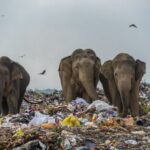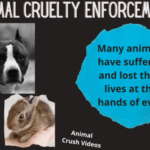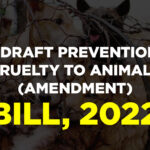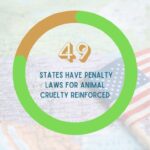In the intricate interplay of life, animals exist not only as companions or resources but as sentient beings imbued with emotions, instincts, and the capacity to suffer. Yet, the unfathomable cruelty inflicted upon them reverberates through society, illuminating an insidious truth: animal cruelty is an affliction that extends far beyond the boundaries of species. It affects humans in myriad ways, shaping communities, psychologies, and future generations.
At the core of the discussion on animal cruelty lies the undeniable reality that the repercussions cascade outward, rippling through the very fabric of society. The symbiotic relationship between humans and animals has been established through millennia; thus, when one suffers, the other inevitably feels the tremors of distress.
The victims of animal cruelty are not limited to the four-legged denizens of our planet. They are, rather, emblematic of broader societal malaise. Just as a fractured mirror reflects distorted images, so too does the cruelty towards animals reflect deeper human issues — from violence and neglect to systemic indifference. This relationship is not merely coincidental; it forms a complex tapestry woven from a common thread of empathy and moral responsibility.
To grasp the extent of this issue, one must acknowledge the profiles of both the per perpetrators and the victims. Often, those who engage in animal cruelty exhibit behaviors rooted in emotional or psychological distress. Studies indicate that individuals prone to violence against animals frequently harbor violent tendencies towards humans as well. This correlation paints a frightening panorama, suggesting that addressing animal cruelty is imperative not merely for the protection of animals but for the preservation of human safety. It is a clarion call for society, echoing the ancient wisdom that “as within, so without.”
Moreover, children who witness or engage in acts of violence against animals are particularly vulnerable. Their formative years become tainted with a skewed perception of empathy and ethics. The seeds of compassion, essential for a healthy society, are often choked by the weeds of desensitization and brutality. For these impressionable minds, the ramifications stretch far into the future, with numerous studies linking childhood animal cruelty to later criminal behavior. The heart, when exposed to violence, often beats out of sync with the rhythm of kindness.
A poignant metaphor emerges when one considers the empathy gap in society: imagine a great river — a lifeline of compassion. When brutality against animals occurs, it acts as a dam, blocking the flow of empathy and dousing potential kindness before it can reach its destination. This not only affects the animals suffering in silence but also cultivates a parched landscape for human relationships. The ardor of compassion dwindles, leaving barren fields where the fruits of understanding and care should flourish.
The impacts of animal cruelty permeate social structures, often manifesting in psychological and environmental degradation. In areas plagued by animal neglect, communities may witness a deterioration of public safety and cohesion. Abandoned or abused animals become harbingers of decay, drawing attention not only to the plight of the animals but also reflecting deeper societal ills, such as poverty, crime, and inadequate mental health resources. A society that neglects animal welfare is, in essence, signaling a general lack of regard for well-being, breeding a cycle of despair.
In the ecological realm, animal cruelty has broader implications for biodiversity and environmental health. Abusing or neglecting animals leads to imbalances within ecosystems, affecting the very air we breathe and the water we drink. When species are threatened or exterminated due to human actions, it directly and indirectly disrupts food chains, leading to unsustainable conditions. The intricate web of life is akin to an elaborate symphony; when one instrument falters, the entire composition falters with it. Thus, combating animal cruelty is paramount not only for ethical considerations but for the overarching health of our planet.
In light of these multifaceted implications, the societal response to animal cruelty must evolve from reactive measures to proactive initiatives. Education emerges as a cornerstone of change, fostering a legacy of compassion that acknowledges our interconnectedness. By integrating humane education into schools and communities, we can nurture a culture that prioritizes kindness and ethics. This cultural shift holds the potential to reduce violence, enrich emotional intelligence, and fortify bonds between individuals, both human and animal.
Furthermore, reinforcing legislation that protects animals from abuse signifies a commitment to societal values. It is tantamount to raising a collective hand against injustice, declaring that cruelty — in any form — has no place in our civilized communities. Stricter penalties for animal abuse resonate not just within the realms of legality but also moral standing. When laws reflect the sanctity of all life, they signify a societal desire for harmony and respect.
The journey towards understanding and combating the repercussions of animal cruelty will be labyrinthine. However, it is pivotal to recognize that the narratives of both humans and animals are intertwined. The plight of animals serves not only as a testament to their suffering but as a reality check for humanity. The echoes of a compassionless act can shape future generations, forging paths that either uphold dignity or perpetuate discord.
Ultimately, the message is clear: the cost of neglecting animal welfare is far too high. Not only are animals deserving of compassion, but establishing an ecosystem grounded in empathy has the potential to cultivate healthier, safer communities for all. In this quest for harmony, the chorus must rise, emphasizing that a society that protects its most vulnerable is not only a measure of moral fortitude but also a reflection of humanity itself.







